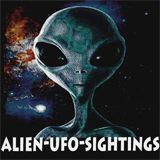Alien Base: The Evidence for Extraterrestrial Colonization of Earth: LONG-HAIRED INTERLOPERS
In Porto Alegre, Rio Grande do Sul, Brazil, an agricultural engineer and his family were taking a drive on 10 November 1954 when they saw a landed disc, from which alighted two normal-sized men with long hair and dressed in overall-like clothing. They approached the car with their arms held above their heads. The engineer’s wife and daughter were so frightened that they insisted on fleeing the scene. As they looked back, they watched the men board their craft and take off at a tremendous speed.
One month later, on 9 December, Olmira da Costa e Rosa was cultivating his crops at Linha Bela Vista, two and a half miles from Venancio Aires — also in Rio Grande do Sul — when he heard something ‘like a sewing machine’, as animals in a nearby field panicked. Looking up, he saw a strange-looking man.
Further away, hovering just above the ground, was an object shaped like an explorer’s hat and enveloped in a smoky haze. There were two other men, one in the craft, his head and shoulders sticking out, the other examining a barbed-wire fence. Costa e Rosa dropped his hoe in shock. The stranger nearest him raised his hand, smiled and picked up the hoe, which he examined carefully before handing it back. Then the man bent down, uprooted some plants, joined the others and walked back to the craft.
Costa e Rosa stood as though paralysed, but to assure himself that these strangers meant no harm, he approached the craft. Although the man who had examined the hoe and the man in the craft made no move to stop him, the one who had been studying the fence made a gesture indicating that he should halt.
He did so. Some of the farmer’s animals then approached the strangers, who looked at them with great interest. ‘With words and gestures the farmer tried to tell them he would be happy to make a gift of one of his animals,’ reported investigator Coral Lorenzen. ‘The strangers didn’t seem enthused about the offer.’ Suddenly the spacemen trooped into their craft, which (as so often) lifted off slowly at first then accelerated away at fantastic speed.
The farmer, who was practically illiterate and knew nothing about flying saucers, provided a detailed description of the visitors (whom he believed to be simply aviators from another country), as reported by Lorenzen: They appeared to be of medium height, broad-shouldered, with long blond hair which blew in the wind. With their extremely pale skin and slanted eyes they were not normal looking by Earth standards. Their clothing consisted of light brown coverall-like garments fastened to their shoes. Afterward Costa e Rosa said the shoes seemed especially strange because they had no heels.
When the craft had gone, Costa e Rosa searched the ground under which it had hovered, but found nothing. However, a smell ‘like burning coal’ permeated the air for some time afterwards. Two days later, Pedro Morais, who lived less than a mile from Costa e Rosa, also saw an object making a sound like a sewing machine, oscillating as it hovered. Nearby could be seen two humanoid figures.
Angered by the trespass, he headed in their direction. One of the humanoids came running towards him as the other gestured that he should come no closer, then uprooted a tobacco plant. Morais ignored the warning, but there were no repercussions. The beings, who seemed to be enveloped in a kind of yellow- coloured ‘sack’, obscuring facial details, returned to their craft and took off.’
In commenting on the close similarity between Costa e Rosa’s spacemen and George Adamski’s ‘Venusian’, Gordon Creighton wrote: ‘Honesty requires that this case, and the other Latin American cases of “long-haired” men, be very carefully investigated. It does not seem that this has been done.
